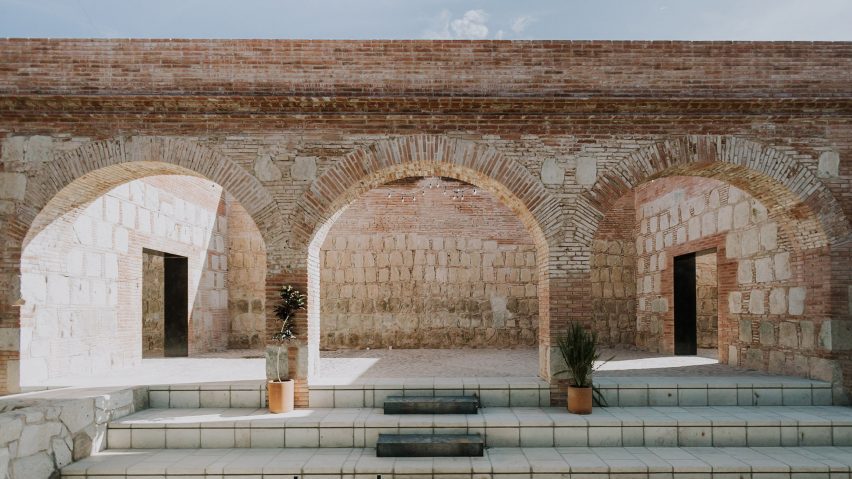
RootStudio transforms former Oaxaca convent into culinary centre
Architecture firm RootStudio has converted a historic convent building into a centre for celebrating the rich culinary legacy of Mexico's Oaxaca region.
The Centro Gastronómico de Oaxaca occupies the former convent of Carmen el Alto in the city of Oaxaca – the capital of the state of the same name.
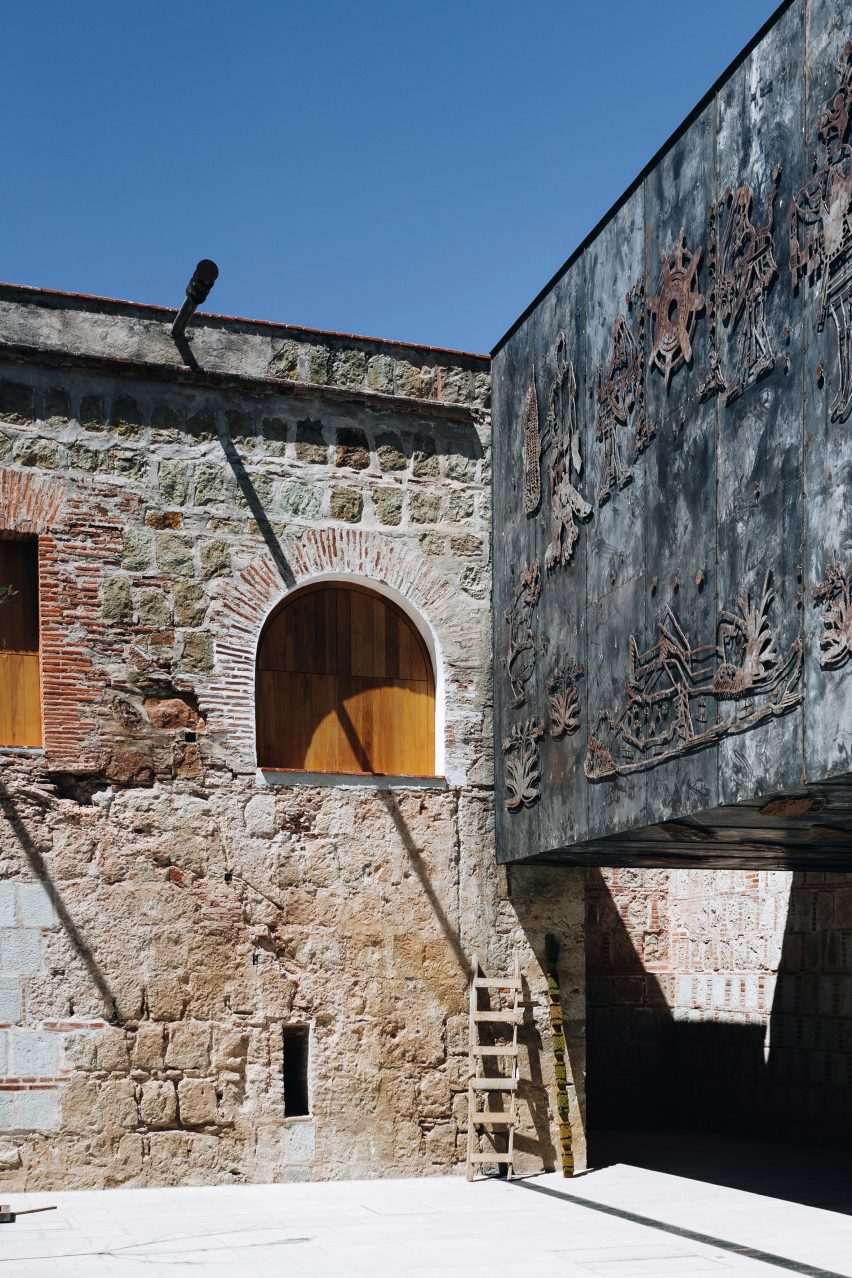
Dating back to the 16th century, the colonial-style structure has been carefully restored by RootStudio to create "an educational and multidisciplinary space where culinary traditions and sustainability create a sensory experience", which hosts different chefs from across the region.
The cultural centre accommodates several areas and functions within the existing building and its grounds, including a study centre comprising an administrative office, classrooms and public library.
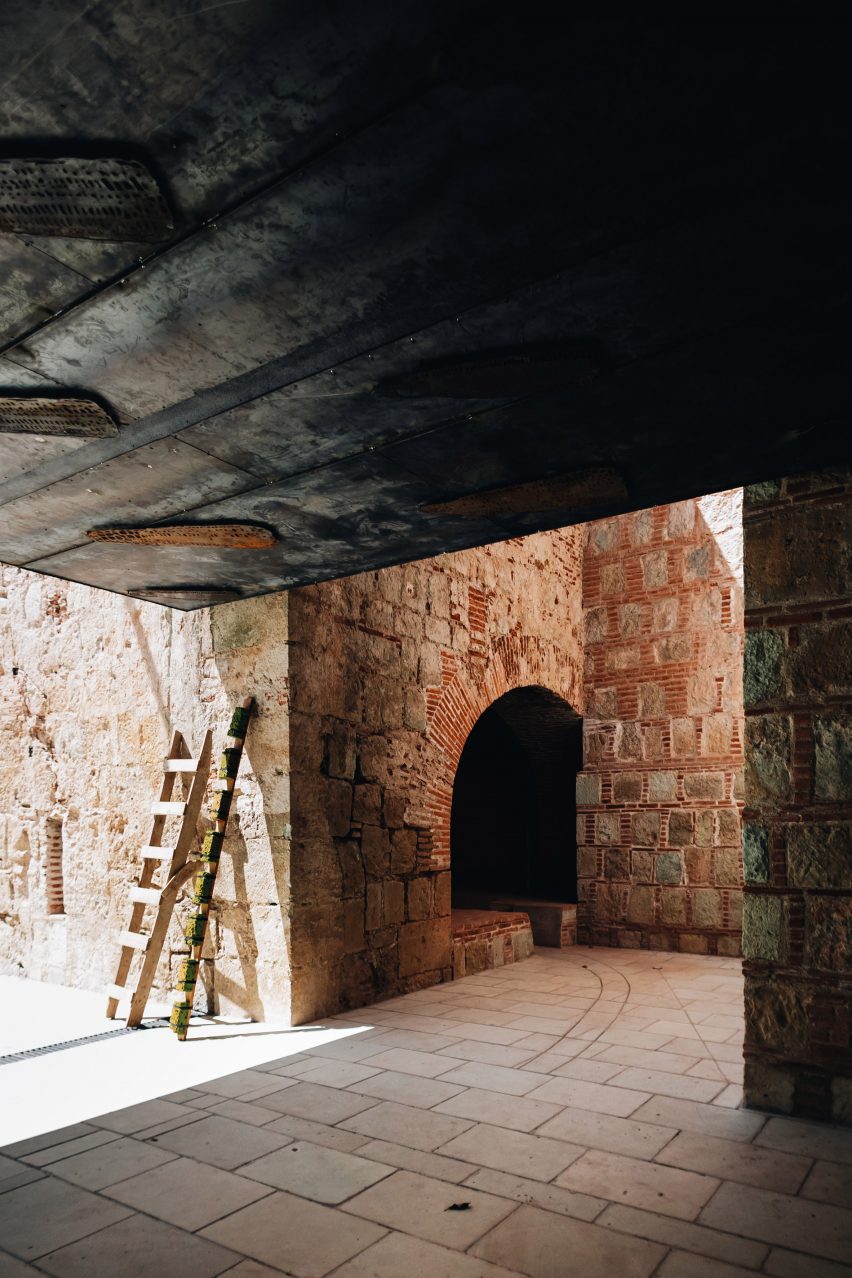
An array of commercial and recreational facilities are also incorporated, such as a restaurant, kitchen, cocktail and tasting rooms, gallery, cafeteria, multipurpose rooms, auditorium, courtyards, arcade gardens and retail premises.
The restoration work was carried out in compliance with guidelines provided by the Oaxaca division of the National Institute of Anthropology and History, which dictated the preservation of primary features and the original layout.
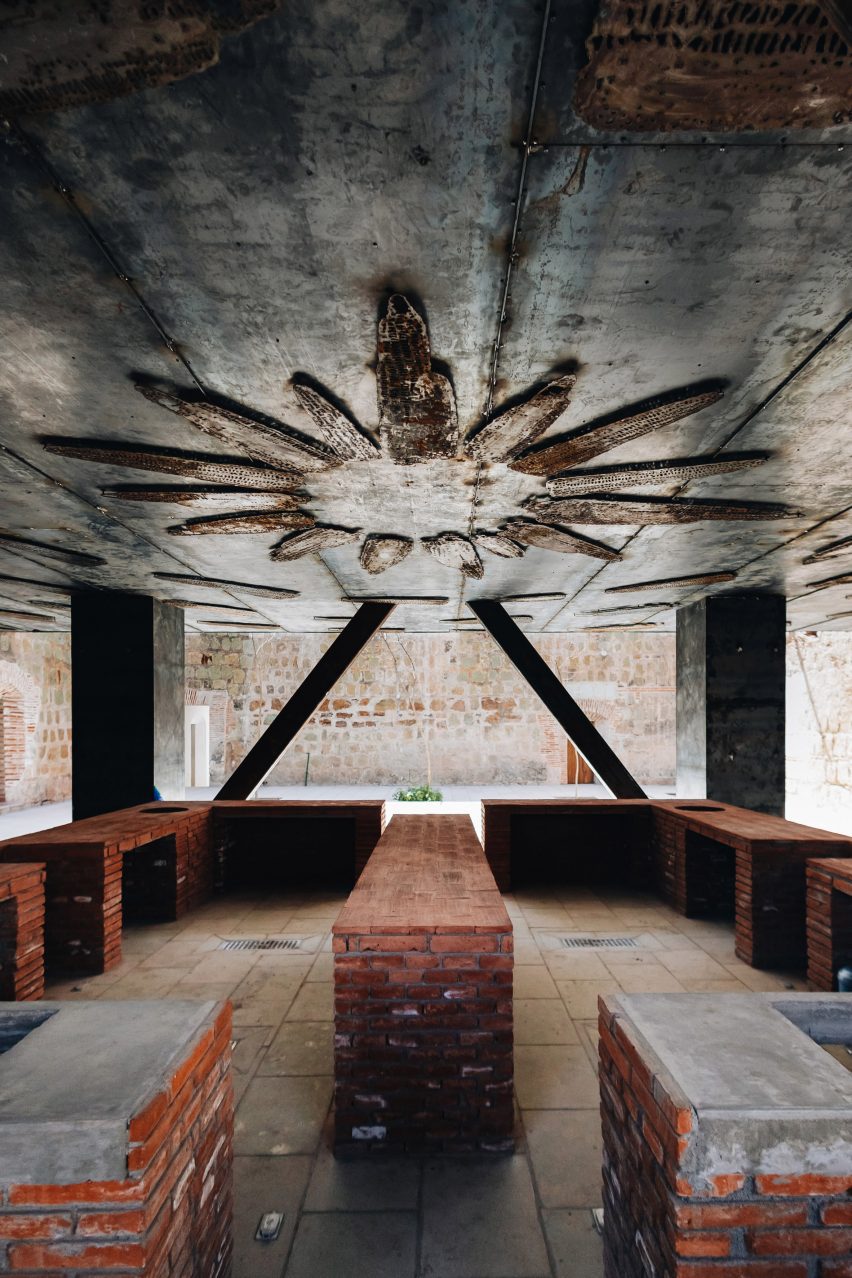
A team of more than 20 designers and supervisors from the Instituto del Patrimonio Cultural del Estado de Oaxaca (INPAC) and the Instituto Oaxaqueño Constructor de Infraestructura Física Educativa (IOCIFED) took part in the project.
Over the years, the building had been used as a civil registry and a warehouse, among other functions, and several discoveries were made during the efforts to strip it back to its original bones.
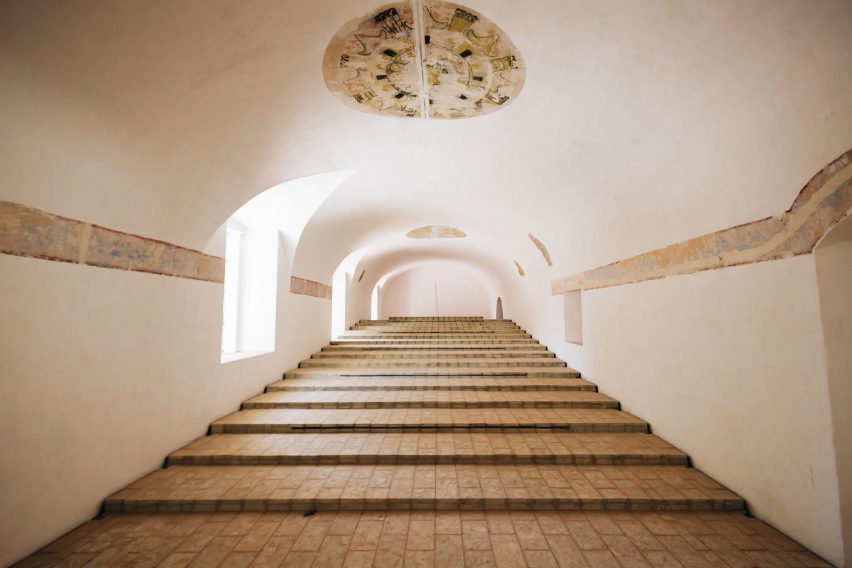
Among them was an 18th-century sewer, which has now been transformed into a space for mezcal tastings and other culinary events.
The team also uncovered a diagonal window similar to one located in the convent of the same order in San Ángel, Mexico City.
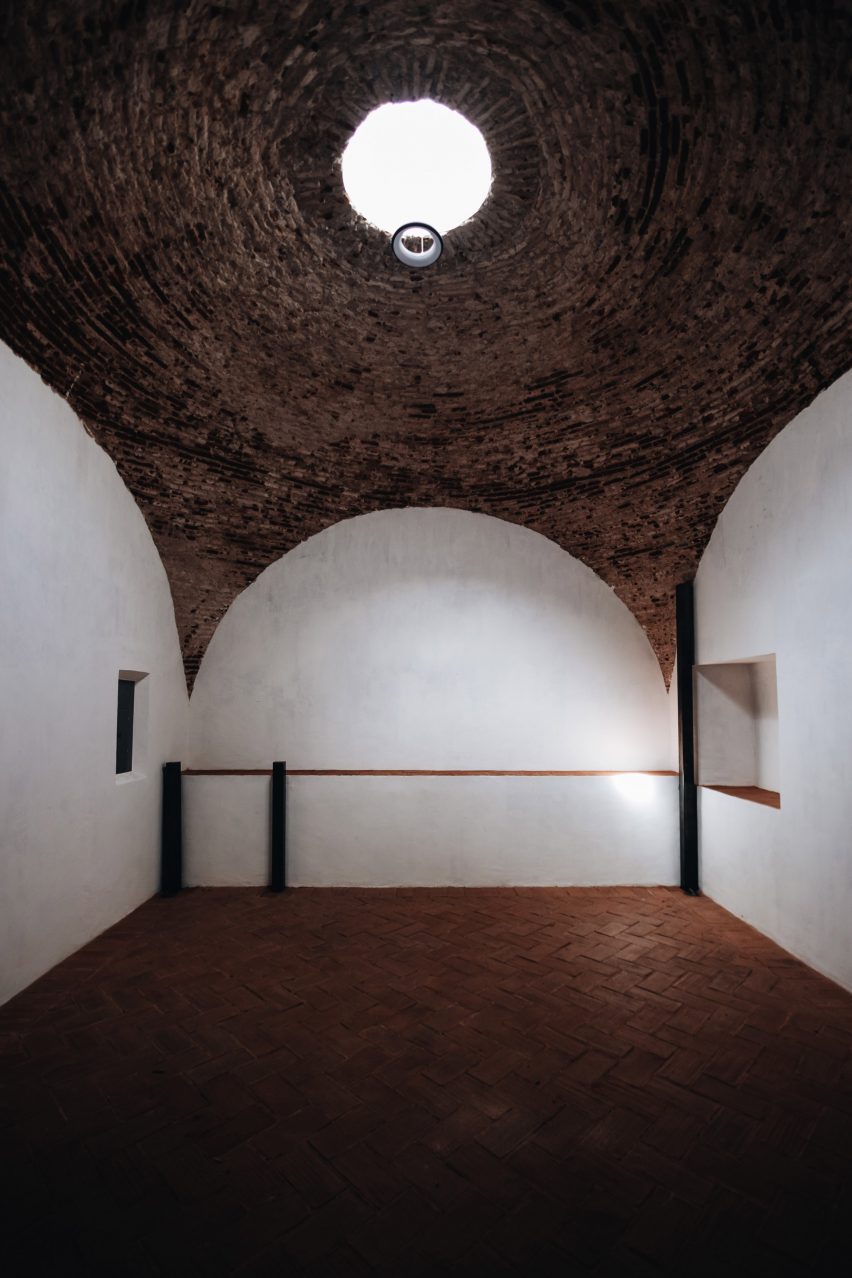
Wall frescoes, vaulted ceilings and the original floor levels were all recovered, while windows that had been walled-up were reopened.
Details were restored using traditional construction techniques, with materials like lime, brick, wood and Oaxacan Cantera verde stone.

"[The] synthesis, which preserves the materiality and typology of the building, establishes a dialogue between the urban environment and the pre-existing building," the studio said.
Extensive restoration work was also required across the building's exterior and the surrounding landscape, which was planted with species that are either edible or associated with cooking.
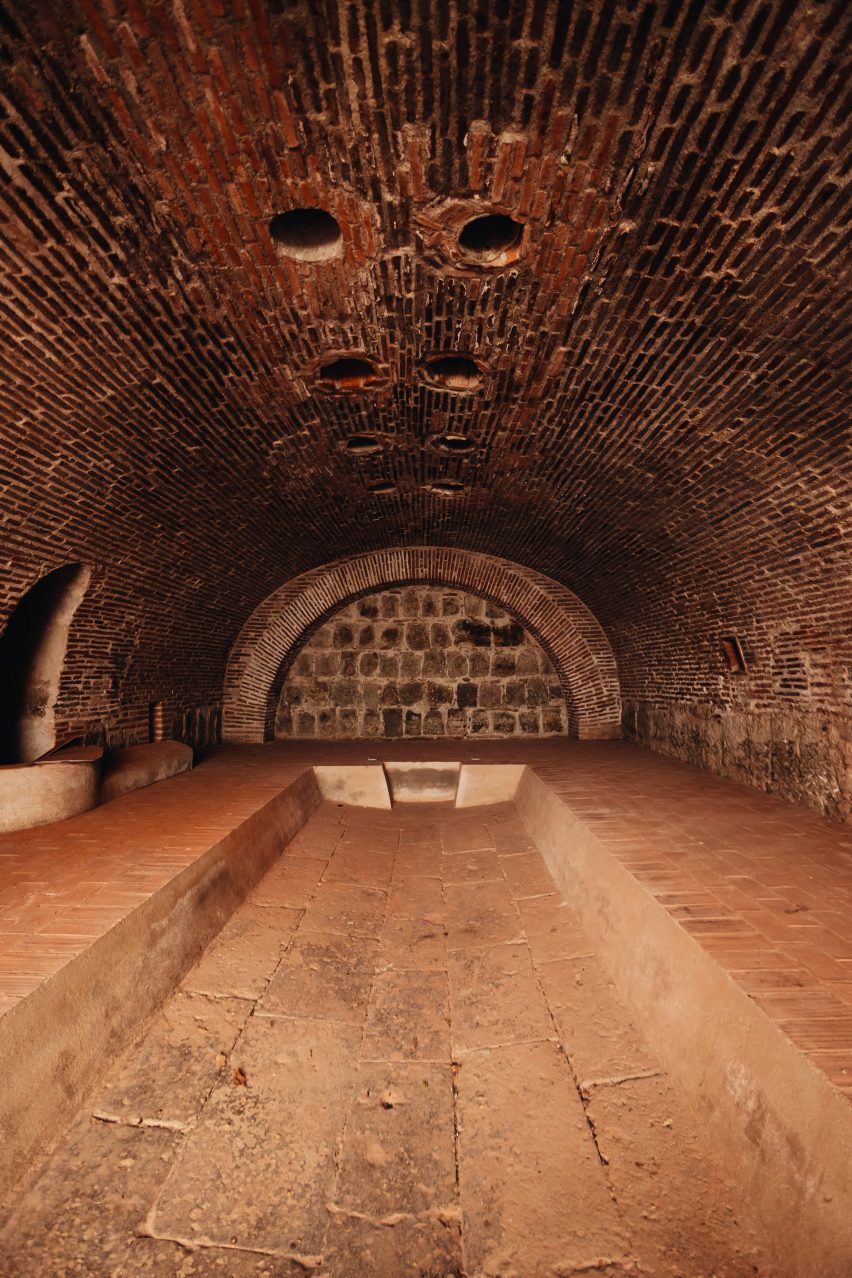
Arcades in the former goods handling yard were converted into spaces for outdoor events, while a new intervention that juxtaposes the historic building was constructed in the parking lot.
"In order to contrast past and present, [we] installed an elevated contemporary element in raw steel, containing the industrial kitchens," said the firm.
This two-storey pavilion with a steel frame and vaulted brick ceilings also houses 12 commercial spaces and a large, flexible event space with a panoramic view of local landmarks.
Throughout the cultural centre, a variety of collaborations with local artists and artisans are displayed.
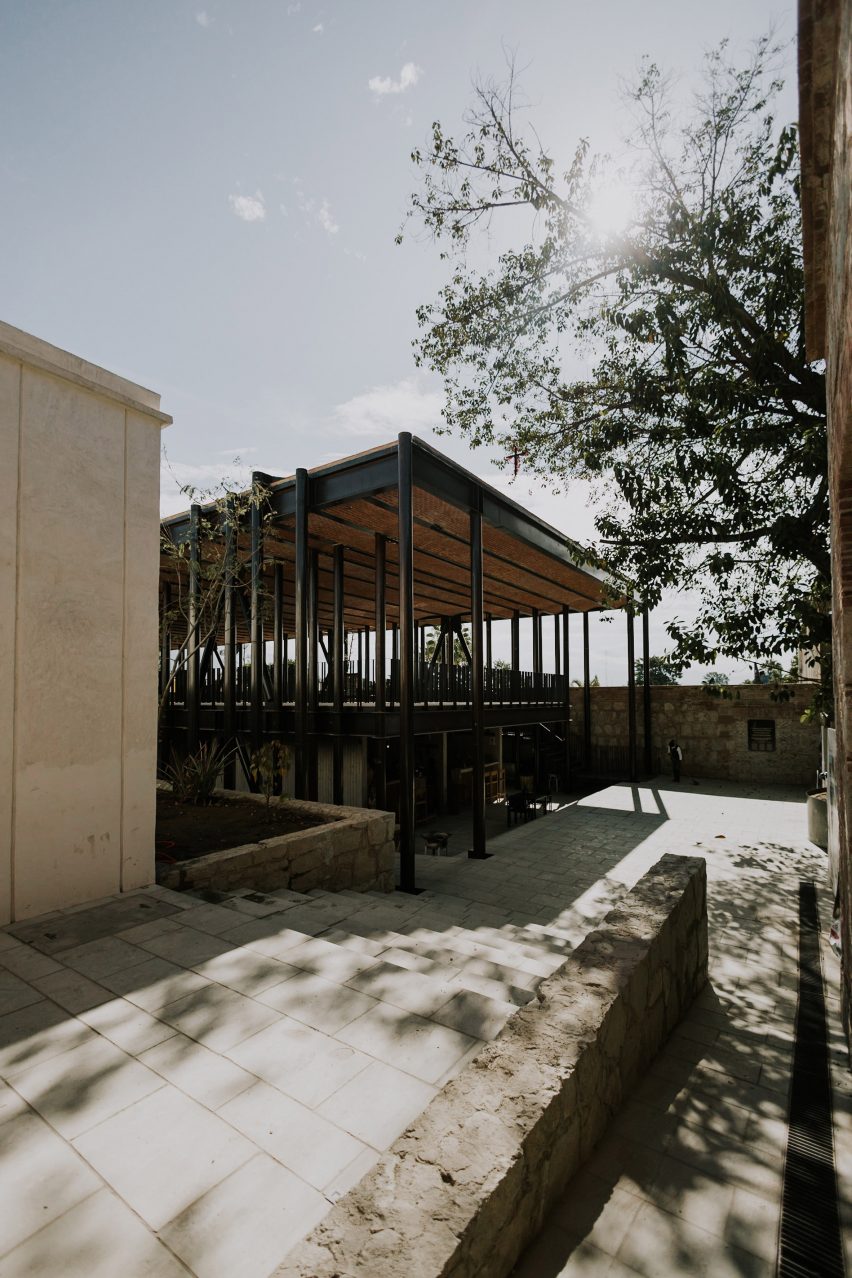
These include a mural by Juchitán-born artist Demián Flores that illustrates the various species of corn that are endemic to the region, and imagery that indicates the building's different functions by Sabino Guisu.
Furniture was custom-made using Macuil wood, also called rosewood, which is known for its medicinal properties.
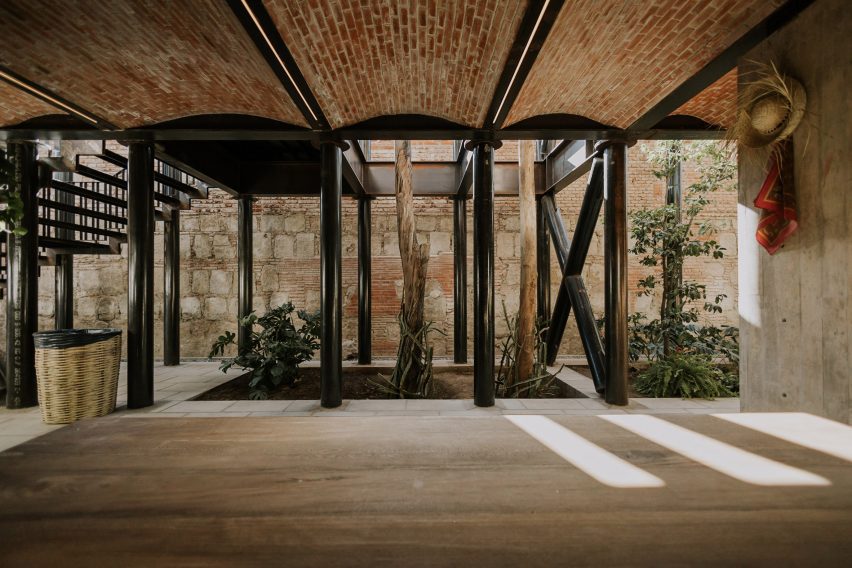
Close attention was also paid to accessibility in the new addition, which has multiple elevators.
"Accessibility and inclusion are fundamental principles in this project, as it seeks the interaction of individuals with their environment through facilities for people who have some type of disability," said RootStudio.
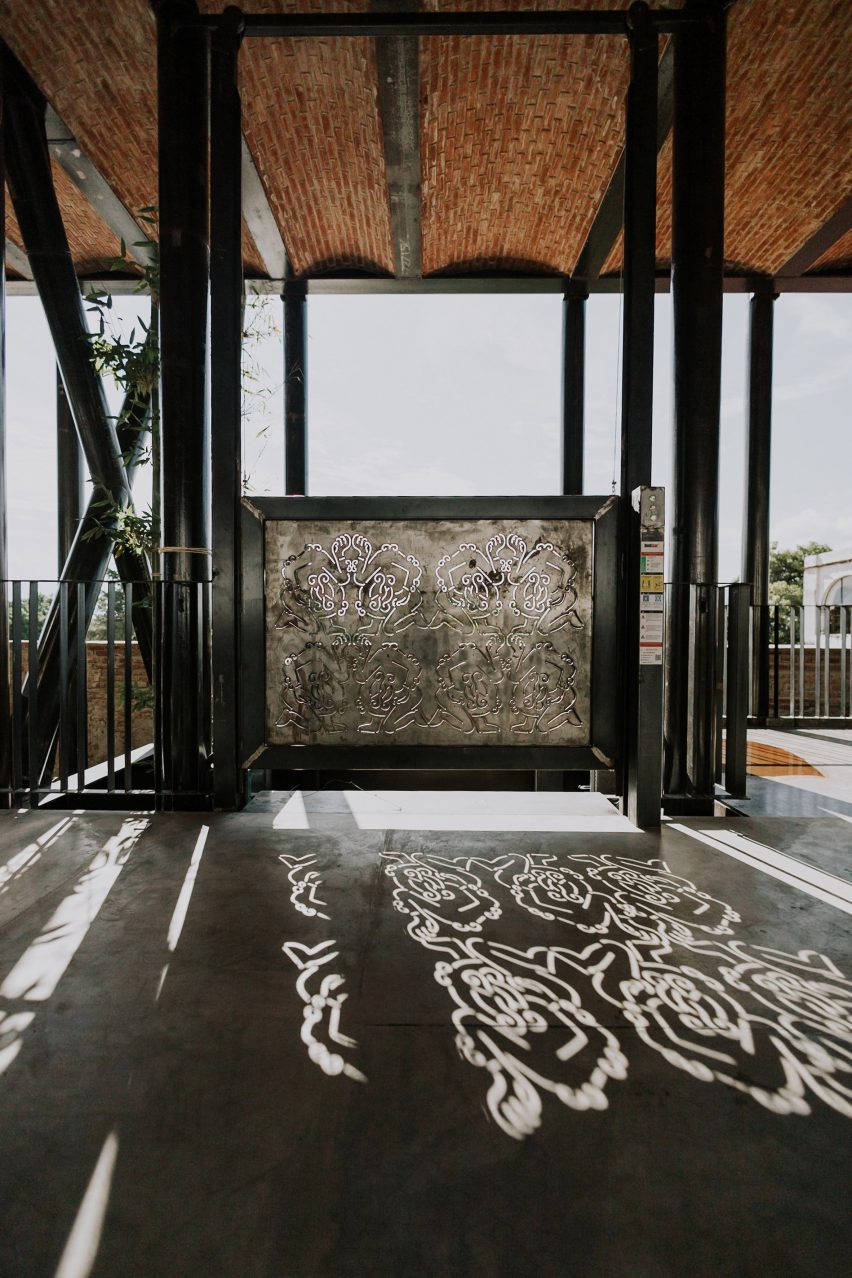
RootStudio is led by architect Joao Boto Caeiro and is known for its approach to sustainability, with previous projects including a concrete hotel on the outskirts of Oaxaca that was constructed in stages.
Centro Gastronómico de Oaxaca is longlisted in the Heritage Project category for the 2023 Dezeen Awards, along with the redevelopment of Battersea Power Station in London and the conversion of a Beijing textile factory into headquarters for a Chinese pastry brand. See the full architecture longlist here.
The photography is by Lizet Ortiz.